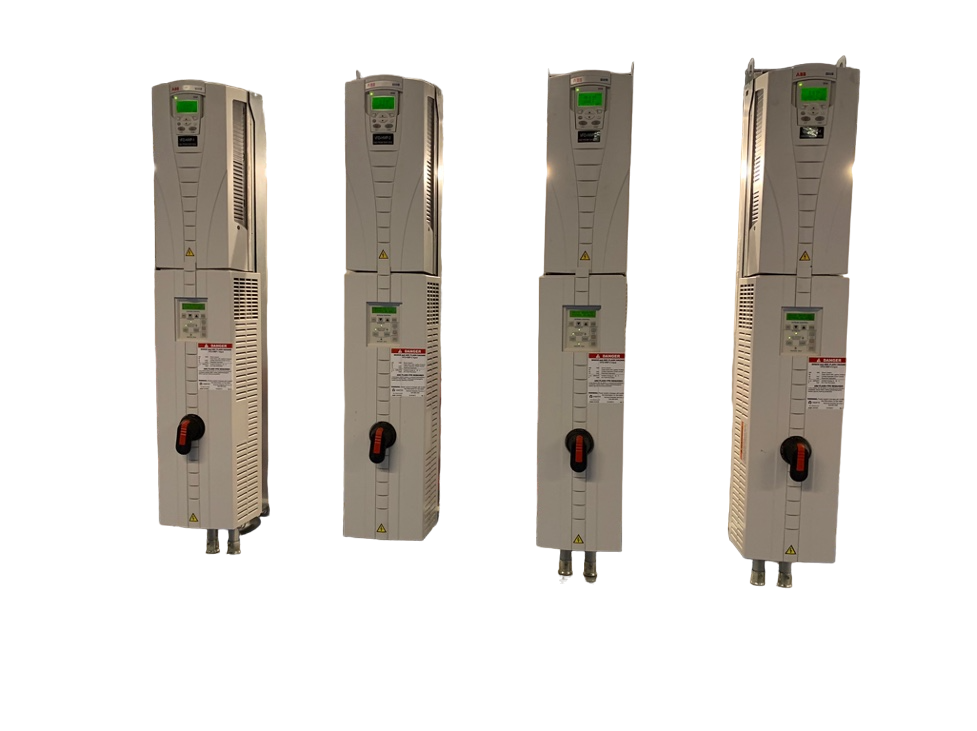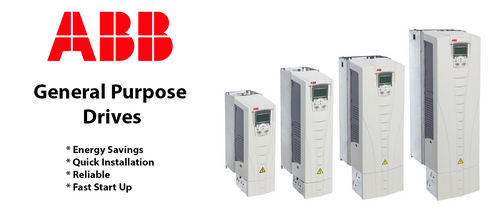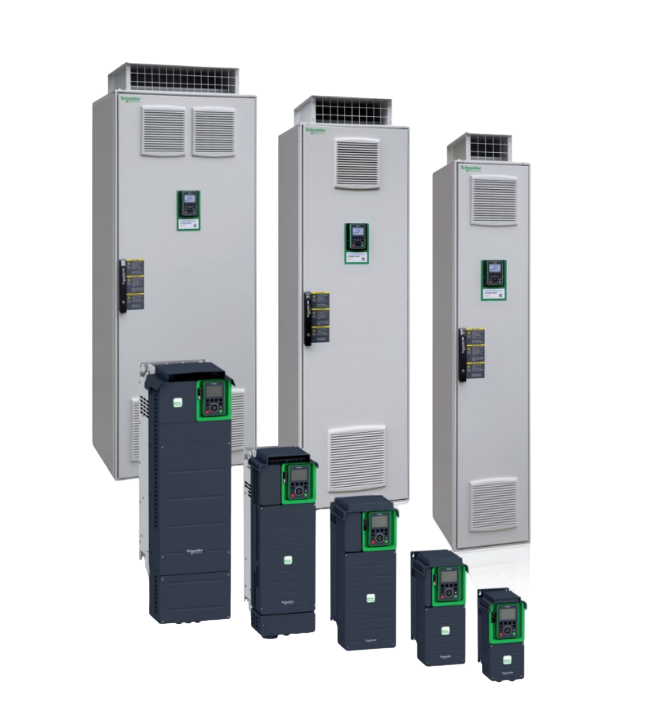HVAC Variable Frequency Drives
25.10.2024

In order to ensure effective temperature control, ventilation, and air quality, heating, ventilation, and air conditioning (HVAC) systems are essential to the management of commercial and industrial facilities. Since these systems use a significant amount of energy, enterprises are depending more and more on cutting-edge technologies to boost productivity and lower operating expenses. The Variable Frequency Drive (VFD) is one of the best instruments for HVAC system optimization. By modifying the power supply's frequency and voltage, VFDs regulate the speed of electric motors. This allows HVAC systems to match output to demand in real time, greatly increasing energy efficiency.
This dynamic adjustment allows facilities to maintain optimal comfort and production conditions while reducing energy consumption, equipment wear, and operational costs. HVAC VFDs thus represent a crucial advancement in industrial energy management, merging operational benefits with sustainability.
Types of HVAC Variable Frequency Drives
Knowing the distinctions between general-purpose and specialized HVAC VFDs is crucial when choosing one for HVAC applications. Each of these groups has special advantages catered to particular HVAC needs, and they all play different roles.
General-Purpose VFDs
General-purpose VFDs are made to be widely used in a variety of industries and are usually employed in situations where energy savings and precise speed control are required but special modifications to the HVAC system are not necessary. Because of their great adaptability, these drives can be used for a variety of motor control applications, including compressors, fans, pumps, and conveyor belts.
Key Features of General-Purpose VFDs in HVAC Systems:
- Versatility: General-purpose VFDs can handle a range of motor loads, making them ideal for facilities where different types of motor control are needed beyond just HVAC applications.
- Standardized Controls: They include basic settings for speed control, soft start/stop, and overload protection, which make them easy to integrate into standard HVAC systems without extensive customization.
- Cost Efficiency: Since they’re not specifically engineered for HVAC, general-purpose VFDs can be a more cost-effective solution for facilities looking to balance budget constraints with energy-saving goals.
- Basic Energy Savings: By controlling motor speed and ramping up or down based on demand, these VFDs can still achieve significant energy savings, though they may lack some of the advanced features found in dedicated HVAC models.
- Use Cases for General-Purpose VFDs: General-purpose VFDs are commonly used in smaller HVAC applications, such as single-zone systems or smaller commercial buildings, where complex HVAC-specific control features are not required. They provide essential motor control functionality and energy efficiency without the added cost of HVAC-specific customization.

Dedicated HVAC VFDs
Dedicated HVAC VFDs are specifically engineered to meet the unique demands of HVAC applications, offering enhanced features and functionalities that improve efficiency, comfort, and environmental control in complex or large-scale HVAC systems. These drives are optimized for controlling fans, pumps, and compressors, enabling precise airflow and temperature regulation, often critical in large commercial and industrial facilities.
Key Features of Dedicated HVAC VFDs:
- HVAC-Specific Control Functions: These VFDs include advanced features such as bypass functions, fire and smoke mode, and automated fault management, which are tailored to the needs of HVAC systems in environments where safety, reliability, and continuous operation are essential.
- Enhanced Energy Efficiency: HVAC VFDs often include sensor integration and demand-based control algorithms, which allow them to adjust motor speeds in real-time, significantly reducing energy consumption compared to general-purpose VFDs.
- Temperature and Humidity Control: Dedicated HVAC VFDs can work in conjunction with Building Management Systems (BMS) to maintain optimal indoor conditions, making them ideal for environments where precise temperature and humidity levels are crucial, such as hospitals, data centers, and laboratories.
- Quiet Operation: They are designed with HVAC noise reduction in mind, which is beneficial for facilities where noise levels need to be minimized for comfort, such as hotels, office buildings, and residential complexes.
- Use Cases for Dedicated HVAC VFDs: Dedicated HVAC VFDs are the preferred choice for complex and large-scale HVAC systems, including multi-zone systems, large commercial or industrial buildings, and facilities with strict environmental or safety requirements. They offer the high level of customization and control required for advanced HVAC systems, allowing operators to achieve peak efficiency and reliability in demanding environments.
Importance of HVAC in Industries
HVAC (heating, ventilation, and air conditioning) systems create productive, safe, and legal workplaces in a variety of sectors.
1. Enhancing Operational Efficiency and Product Quality
In industries where precision and consistency are paramount, HVAC systems help maintain stable environmental conditions that directly affect product quality and production efficiency.
- Manufacturing and Processing
- Food and Beverage
- Data Centers
2. Employee Safety and Comfort
Industrial environments can expose workers to extreme temperatures, dust, or chemical vapors, especially in sectors such as metal fabrication, mining, and automotive manufacturing. HVAC systems help maintain air quality and comfortable working temperatures, creating safer and more productive work environments:
- Temperature Control
- Ventilation
3. Energy Efficiency and Cost Savings
Optimizing HVAC systems to lower operating costs and environmental effect is becoming more and more important as energy costs continue to climb. Because they enable HVAC systems to modify motor speeds in response to real-time demand, variable frequency drives, or VFDs, have emerged as crucial instruments in accomplishing this optimization:
- Energy Savings
- Operational Savings
4. Compliance with Industry Regulations
Industries are subject to stringent regulatory standards related to indoor air quality, temperature control, and ventilation, especially in sectors like pharmaceuticals, food and beverage, and healthcare. HVAC systems must be designed and managed to meet these regulatory requirements, ensuring that facilities comply with safety and health guidelines.
5. Supporting Sustainability Initiatives
Energy-efficient HVAC technologies, such as VFDs and energy recovery ventilators, contribute to greener operations by reducing energy consumption, lowering emissions, and enabling facilities to achieve LEED or other environmental certifications.
How Variable Frequency Drives Work in HVAC Systems
The converter, filter, and inverter are the three primary parts of a VFD. Incoming AC power is converted to DC by the converter, then the DC power is smoothed down by the filter and returned to AC with the appropriate frequency by the inverter. This procedure makes it possible to manage motor speed smoothly and effectively.
Control Strategies
In HVAC systems, VFDs are used to control the speed of motors based on system load requirements. For example, in a variable air volume (VAV) system, a static pressure sensor monitors the pressure in the supply air duct. When the pressure drops due to increased cooling demand, the sensor sends a signal to the VFD to increase the fan speed, ensuring adequate airflow. Conversely, when the demand decreases, the VFD reduces the fan speed, saving energy.
Benefits of Using VFDs in HVAC Systems
- Energy Efficiency: VFDs may drastically cut energy usage by modifying motor speeds to match system demands. For fans and pumps, this can frequently mean a 30–50% reduction, while for compressors, it can reach up to 35%.
- Improved Control: VFDs give exact control over motor speeds, which improves the regulation of water, refrigerant, and airflow.
- Reduced Maintenance Costs: Lower motor speeds result in less wear and tear on mechanical components, reducing maintenance requirements and extending equipment lifespan.
- Environmental Impact: Reduced energy consumption translates to lower greenhouse gas emissions, contributing to environmental sustainability.
Where are variable frequency drives (VFDs) used with HVAC equipment?
Applications of VFDs in HVAC systems where they provide maximum impact, from air handling units to chillers.
1. Air Handling Units (AHUs)
Air Handling Units (AHUs) are responsible for distributing conditioned air throughout a building. Typically, AHUs include motors that drive fans to circulate air, either heating or cooling spaces as needed. In many HVAC systems, these fans run at a fixed speed, regardless of demand, leading to energy inefficiency and excess wear on equipment. By installing a VFD, the AHU’s fan speed can be adjusted based on real-time demand, allowing for efficient airflow that matches occupancy levels or temperature requirements. This saves energy, improves indoor air quality, and prolongs the lifespan of the unit.

2. Chilled Water Pumps
Chilled water pumps are used to transport chilled water from chillers to air handlers or other heat exchange units to regulate temperature within a building. Without a VFD, these pumps often operate at full capacity, even when only partial cooling is needed, leading to wasted energy and unnecessary strain. A VFD-equipped pump, on the other hand, can adjust its speed to supply only the necessary amount of water, thereby conserving energy, minimizing operational costs, and reducing wear and tear on the pump and associated piping.
3. Cooling Tower Fans
Cooling towers are used to dissipate heat generated from HVAC processes, particularly in systems that cool large industrial spaces or facilities with heavy cooling loads. The fans within cooling towers remove heat by circulating outside air across the heated water. A cooling tower fan with a VFD can vary its speed based on outdoor temperature, humidity levels, or the HVAC load requirements. During cooler times of day or when less cooling is needed, the fan can operate at a lower speed, saving energy while maintaining optimal cooling performance.
4. Compressors in Chillers and Air Conditioners
Compressors are essential components in air conditioning and chiller systems, responsible for compressing refrigerant and driving the cooling cycle. In traditional systems, compressors operate at full capacity, cycling on and off as demand changes. However, this frequent cycling can cause energy inefficiency and lead to mechanical wear. With a VFD, the compressor can run at variable speeds, matching cooling output to the exact needs of the space. This not only reduces energy use but also prolongs the compressor’s life by eliminating unnecessary starts and stops.
5. Exhaust Fans
Exhaust fans are used to remove stale air, fumes, and contaminants from buildings, particularly in industrial facilities where indoor air quality is a priority. Typically, exhaust fans are designed to run at full speed; however, in situations where the need for ventilation fluctuates, running exhaust fans at a fixed speed can be inefficient. VFDs allow exhaust fans to adjust speed based on ventilation needs, improving air quality and energy efficiency. For instance, in spaces with high occupancy, the fan can run at higher speeds, and when the space is unoccupied, it can run at lower speeds or turn off, conserving energy.
6. Boilers and Hot Water Pumps
In HVAC systems that require heating, VFDs are used with boilers and hot water pumps to ensure efficient heating delivery. Hot water pumps circulate hot water to provide heating across various zones within a building. A VFD can regulate the flow rate based on demand, ensuring that only the required amount of hot water is supplied to maintain the desired temperature. This not only reduces energy consumption but also helps prevent overheating and pressure issues in the system.
7. Humidifiers and Dehumidifiers
Humidity control is essential in many industries, including pharmaceuticals, data centers, and food production. In HVAC systems, humidifiers add moisture to the air, while dehumidifiers remove excess humidity. By incorporating VFDs, these systems can dynamically adjust their output to precisely control humidity levels based on real-time measurements. This precise control allows facilities to maintain strict environmental standards, optimize energy use, and avoid moisture-related issues.
8. Heat Recovery Units
Heat recovery units capture waste heat from the exhaust air and use it to precondition incoming air, enhancing HVAC system efficiency. VFDs on the fans and pumps within these units can adjust speed based on demand, maximizing the heat recovery process during times of peak load and conserving energy during low-demand periods. This is particularly beneficial in systems where energy.
Well-known manufacturers that produce VFDs
1. Siemens
Siemens is a global leader in industrial automation and offers a comprehensive range of siemens vfds specifically designed for HVAC applications. Their Sinamics series of drives are recognized for their robustness and versatility.
2. Schneider Electric
Schneider Electric is a prominent player in the energy management and automation sector, offering a variety of schneider electric vfds under the Altivar series. These drives are tailored for HVAC systems, focusing on energy efficiency and ease of use.
3. ABB
ABB is a global leader in power and automation technologies, providing a diverse portfolio of abb vfds suitable for HVAC applications. Their ACS series is well-regarded for its high performance and flexibility.
4. Danfoss
Danfoss is renowned for its innovative solutions in HVAC and refrigeration, including a range of VFDs that cater to diverse applications. Their VLT series is particularly popular among HVAC professionals.
5. Yaskawa
Yaskawa is a leading manufacturer of motion control and robotics, offering high-quality VFDs for HVAC applications under the U1000 and A1000 series. Their drives are designed to enhance system performance and energy efficiency.
6. Honeywell
Honeywell is a well-established player in the HVAC market, known for its innovative technologies. Their VFDs, part of the Honeywell Building Technologies line, are designed for maximum efficiency in commercial HVAC applications.
7. Eaton
Eaton is a power management company that offers eaton vfds for HVAC systems, focusing on energy efficiency and reliability.
8. Lenze
Lenze is a German company known for its drive technology, including lenze vfds for HVAC applications.
Conclusion
VFDs help optimize energy use by providing precise control over motor speeds, which results in significant cost savings and enhanced operational performance.
As industries strive to meet increasing energy efficiency standards and environmental regulations, the adoption of VFD technology stands out as a pivotal strategy. Their integration with advanced Building Management Systems (BMS) further enhances system responsiveness, allowing for smarter, more efficient operation tailored to specific conditions.